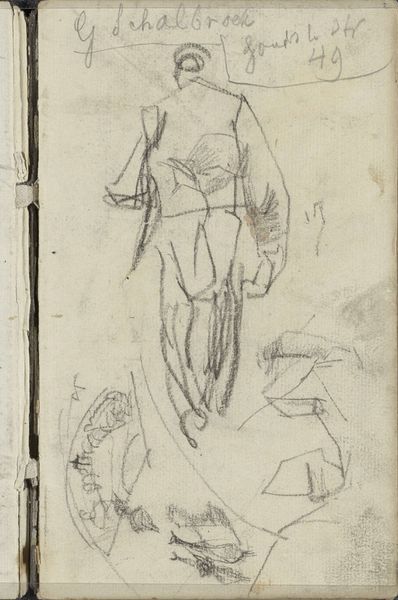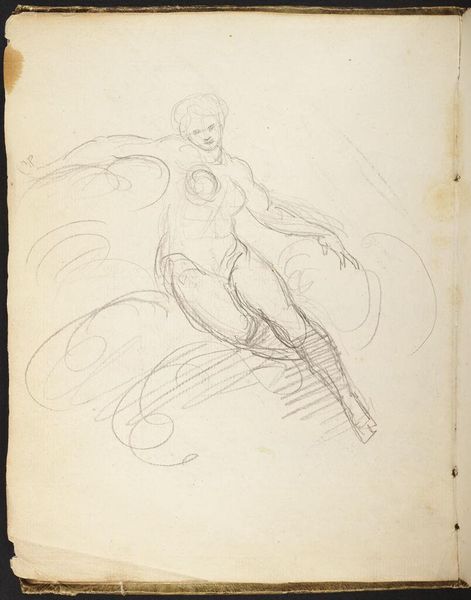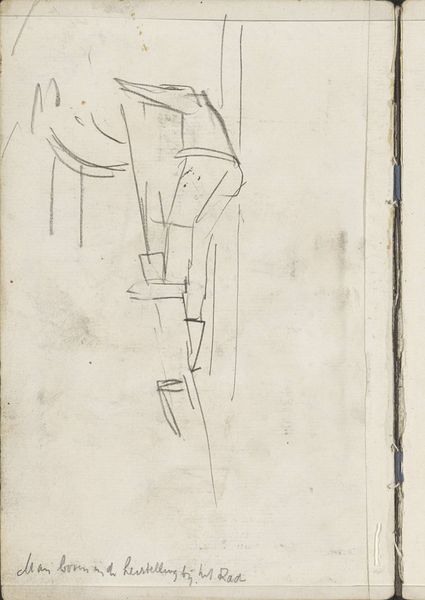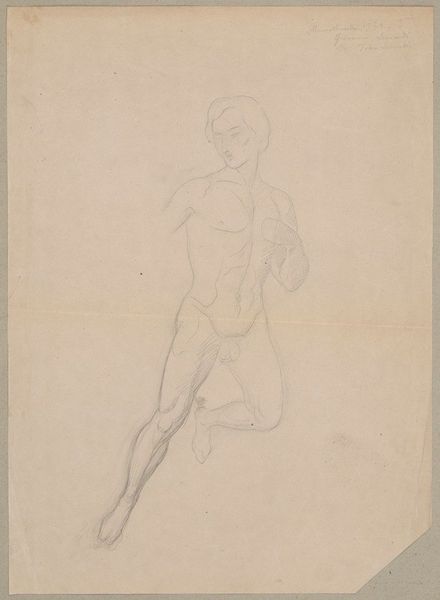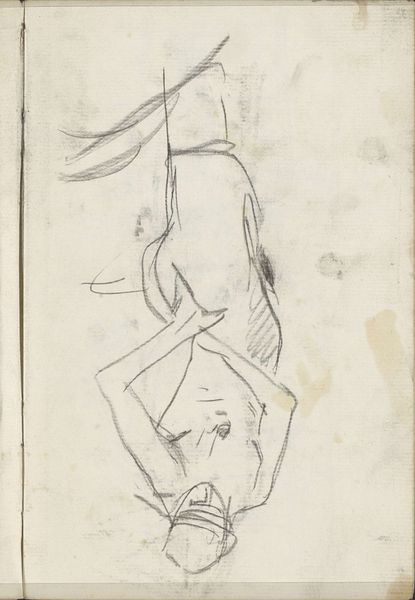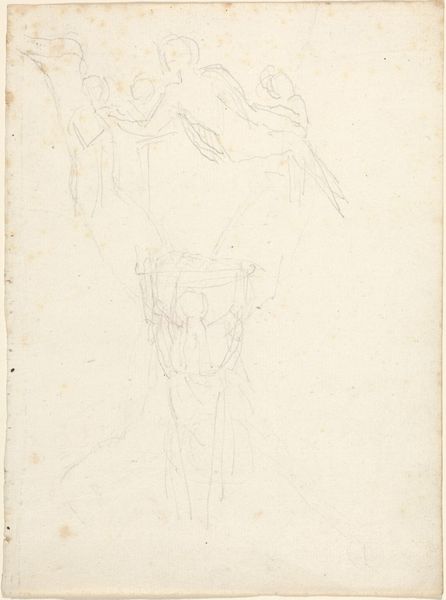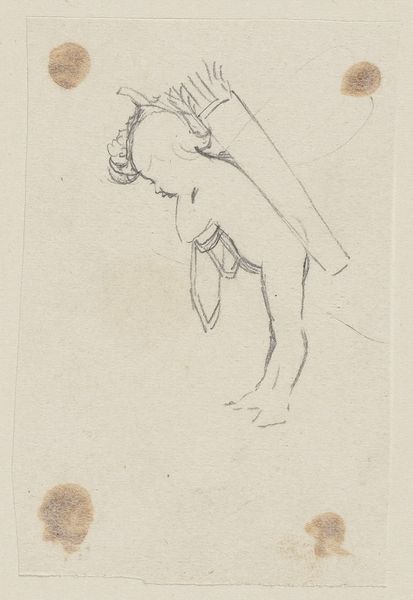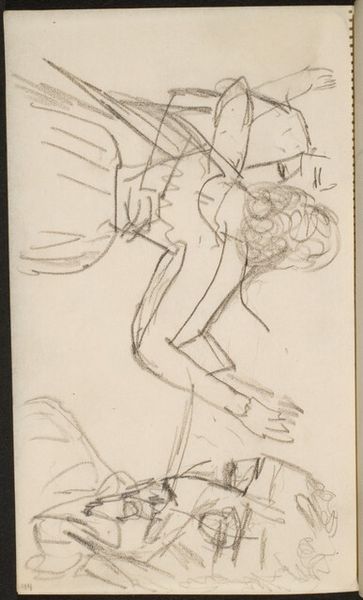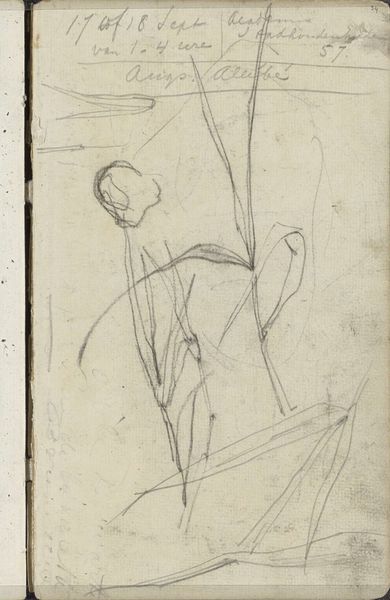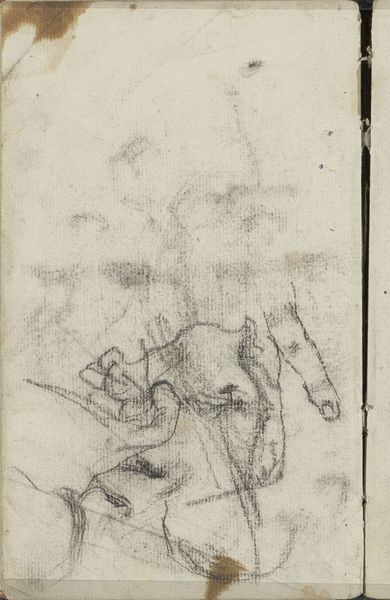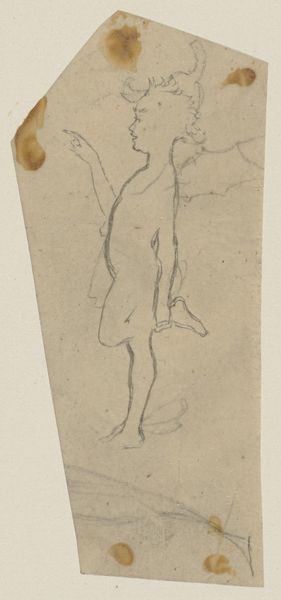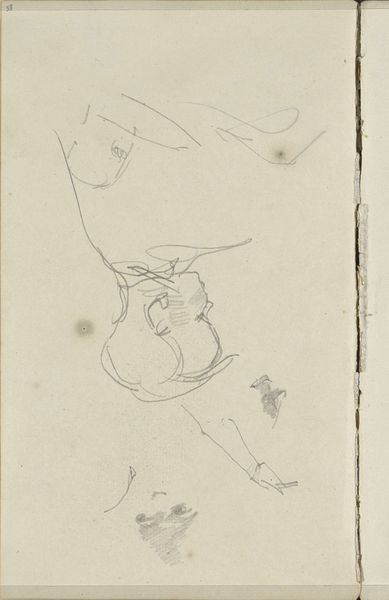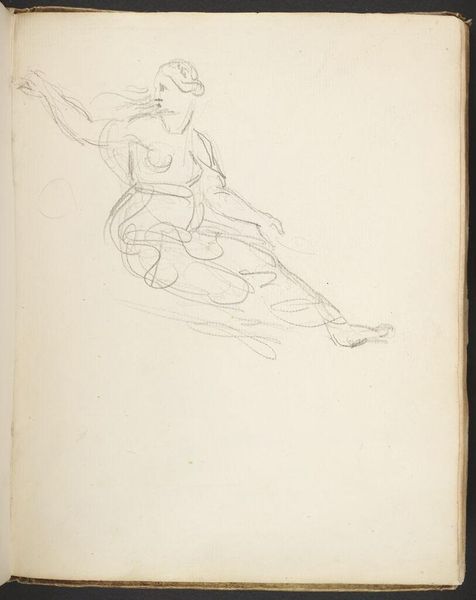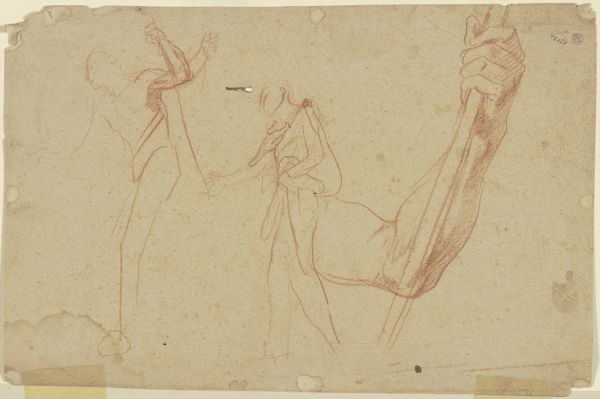
drawing, pencil, graphite
#
drawing
#
figuration
#
pencil
#
line
#
graphite
#
nude
Copyright: Rijks Museum: Open Domain
Curator: What strikes me immediately about Carel Adolph Lion Cachet's drawing, "Figuur die het bovenlijf opzij draait," is the dynamism it captures, even in its unfinished state. There’s a sense of energy, a body in mid-motion. Editor: Absolutely. The term ‘dynamism’ really resonates with me. My initial impression is how untethered and exposed this body seems to be. Its a figure in limbo, unfinished and caught in what feels like a pivotal moment of displacement. Curator: Completed circa 1895, this piece, held in the Rijksmuseum collection, offers an interesting view into the artist’s process. Executed in pencil and graphite, the drawing shows the artist experimenting with form and movement. Editor: I wonder about the choices regarding such a graphic medium as graphite for a study of the nude male figure, traditionally a very loaded site for artistic expression. Do you think this could speak to the objectification or vulnerability experienced? Or it might even address certain historical gender stereotypes, what do you think? Curator: That is an interesting consideration! It could very well be addressing this loaded artistic approach in historical figurative imagery. Beyond that, it feels like the artist is trying to portray the body as something ephemeral, using very limited lines and strokes. Perhaps as a universal figure of the human body itself, not yet individualized. Look also at the circular shape at the bottom, almost like a wheel, grounding this figure, making me think this form might signify time, destiny, fate or even some element of a dance! Editor: Ah yes, the wheel! Intriguing point that you note a universality, considering that a lack of grounding may suggest, perhaps, a broader discussion of existential impermanence. It's difficult to dismiss that. There are several approaches we can bring to that connection. Curator: Ultimately, it’s Lion Cachet's exploration of line and form that captures a sense of potential, of stories untold in the movement and details of the body itself. Editor: It is undeniable that, despite its spare quality, it raises some of the more intricate conversations around gender, movement and form. Curator: And this encourages us to remember art can embody cultural shifts and also act as the stage on which narratives meet with enduring questions.
Comments
No comments
Be the first to comment and join the conversation on the ultimate creative platform.
